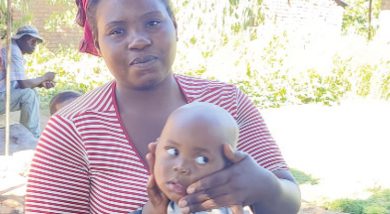Unaids, MSF court govt on new ART model
The Joint United Nations Programme on HIV/Aids (UNAids) and Medicins Sans Frontieres (MSF)-Belgium have encouraged government to consider introducing community-based antiretroviral therapy (ART) programme if the country is to meet the UNAids 2014 targets by 2020.

UNAids is seeking countries’ commitments to end HIV and Aids (PLHIV) by 2030; have 90 percent of people living with HIV and Aids know their status by 2020, 90 percent of people diagnosed with HIV to be on ART by 2020 and 90 percent of patients on ART to be retained in care and have their viral load suppressed by 2020.
UNAids strategic interventions adviser, Dr. Edgar Arnold Lungu, acknowledges that the targets are quite ambitious for resource-constrained countries like Malawi.
But he says the targets are not impossible for Malawi to achieve if given political will.
Said Lungu in an interview on Monday: “Community ART models are already being implemented in other countries in sub-Saharan Africa, including Mozambique, South Africa, Zimbabwe and Lesotho. Mozambique has made community models a national policy.
“We’ve opened up discussions with the Ministry of Health to explore the possibility of using community models and also making it national policy in Malawi as well.”
MSF deputy head of mission, Nicolette Jackson, said to help Malawi achieve the 90 percent target of people on ART to be retained in care and have their viral load suppressed, her organisation in January 2014 piloted community-based approaches in some health facilities in Chiradzulu, Nsanje and Thyolo.
Jackson said results are demonstrating that community models increase retention in care and viral load suppression.
“The approach involves stable patients who attend the clinic only once for six months for clinical consultations and once every three months for drug refills. After one year of implementing this strategy, cumulative retention in care was 97 percent, two percent loss to follow up and less than one percent mortality,” she explained.
MSF field coordinator for Nsanje, Carolina Grafe, said her office has helped in the formation of over 200 community ART groups in the district alone.
The groups consist of six ‘stable PLHIVs’ who take turns to collect drugs on behalf of each on a monthly basis.
Nsanje ART coordinator, Grey Malata, said the model not only reduces the number of visits one has to make to the clinic, it also reduces congestion at the clinic and workload for healthcare workers.
Malata emphasised that as a member goes to collect drugs for the rest of the group, he/she also undergoes clinical assessment and blood drawing, where need arises.
National Association for People Living with HIV and Aids in Malawi (Napham) district coordinator for Nsanje, Lovemore Makaluka, said the model has enhanced drug adherence and sharing of best practices among HIV positive residents in the district.
“Testimonies we’re receiving from our members confirm that the programme could be effective in reducing cases of default and lack of adherence,” he said.
Health Rights and Education Programme executive director, Maziko Matemba, hailed the programme as an important approach in scaling up the new national HIV and Aids strategy.
Matemba said Malawi has no excuse for shunning the model as the country has received a significant increase in financial resources towards HIV and Aids fight.
“Global Fund has increased resources for HIV/Aids in Malawi. Other than that, we’ve partners like Pepfar [US President’s Emergency Plan for Aids Relief], UNAids, CDC [Centre for Disease Control and Prevention] and Usaid [United States Aid for International Development], which have increased their assistance from 80 percent to 95 percent for national resources
“Therefore, resources should not be a big problem in rolling out community ART programme across the country,” he explained.
But chief of health services in the Ministry of Health, Dr. Charles Mwansambo, said government would only consider the proposal after analysing methodologies being used in the implementation of the programme and critically analyse if, indeed, the programme is changing lives of HIV patients.
Mwansambo also said government would conduct its own economic evaluation to assess whether the programme can be feasible and sustainable in the current health set-up.
“We’ll need them to furnish us with information on a number of critical issues that can help us make a proper decision. We’ll submit their methodologies and everything therein to relevant researchers within the ministry who can recommend to make it a policy,” he explained.
At least one million Malawians are living with HIV and Aids while only 536 438 had been initiated into the ART programme by December 2014, according to UNAids.
But director of HIV and Aids Unit in the Ministry of Health Frank Chimbwandira in March 2015 estimated that 15 percent of them had stopped taking the life-prolonging drugs, citing long distances to their nearest health centres as a major hindrance.
The 2015-2020 National HIV and Aids Strategic Plan also suggests the strengthening of community-based models as one practical way to absorb the demand that will be created if more people were to enrol for ART programme. n





